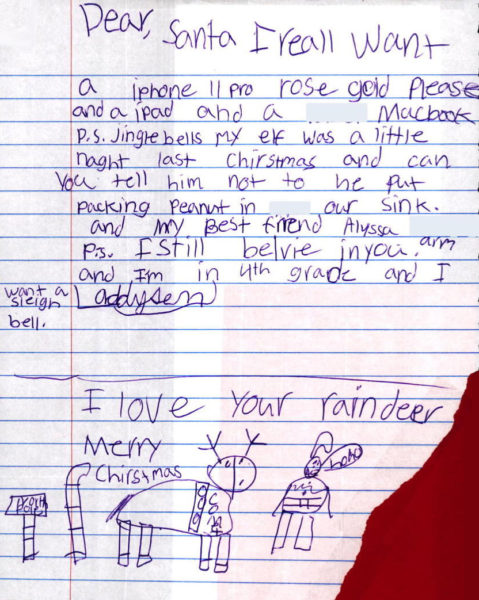How Charitable Involvement Can Help Organizations and Individuals: Lessons from U.S. Post Office Operation Santa
This year, we participated in Operation Santa, the U.S. Post Office’s heartwarming campaign to fulfill wish letters from kids with presents from anonymous gift givers. Here are some reflections about why organizations should support their employees’ charitable efforts and how you can also benefit from such involvement.
How Organizations Benefit from Charitable Efforts
While volunteer efforts can sometimes seem unrelated to an organization’s primary business model, charitable involvement can actually provide tangible benefits, according to the WELL Building Standard, which not only provides design recommendations for healthy buildings but also promotes organizational policies and programs that impact physical and mental health. Specifically, a WELL strategy called Civic Engagement cites evidence that supporting volunteer opportunities can:
- Improve corporate image
- Help attracting and retaining the best employees
- Create a “culture of social responsibility”
- Promote social connection, which can help fight “stress, depression, heart disease, stroke and chronic disease”
Our collaborator, Brian Salazar of Entegra, donated on our behalf and on behalf of other collaborators to the organization called UTEC. Over the last 15 or so years, as a member at Community Boating (CBI) and volunteered several years as Steward and committee member for the racing club. CBI sponsors and financially supports free/low-cost sailing instruction to kids; and, with the help of volunteers, sailing opportunities for the blind and wheelchair users.
What charitable causes speak to you and your organization?
Letters to Santa: What are Children Asking for?
Some letters from Operation Santa asked for unique gifts:
- A turtle
- A 3D printer
- A metal detector and a sluice box for gold panning
- “8000 bucks”
- One letter without requests, only asked for Santa to return soon.
Not surprisingly, many children asked for the latest electronics. If you’re unsure about what to do, the USPS reassures that “[h]opeful as ever, kids tend to make big wishes to Santa all the time. You don’t have to fulfill their expensive tech and toy requests…just hearing back from Santa is a win for any child!”
Out of 14 letters still available to be adopted, only 4 asked for outdoor toys (2 of the 4 also asked for electronics). Given current obesity trends, we wondered whether this small sample reflected concerns that today’s children are less likely to run around in the woods or spend time in nature. We wished someone would ask for new pond hockey skates.
We adopted a letter from Addysen in Ohio, which caught our eye, in part, because of her drawings (a mailbox, candy cane, reindeer and Santa). We fulfilled her wish for a sleigh bell and also included a stuffed reindeer.




“I still believe in you.” Personal Lessons from Operation Santa
For those interested in more background about the program, we recommend the documentary, “Dear Santa” and this NPR article by Emma Bowman.
We’ve learned a few things from Operation Santa:
-
-
- We are all looking for social connection. This need is particularly relevant in the current pandemic. In fact, the personal nature of these letters makes them so endearing. Other organizations raising money for causes could probably follow this example to connect with donors.
- Seeing other’s needs provides perspective and helps us practice gratitude and empathy. Letters can open a window into someone else’s world. Bowman’s article describes an uptick of letters during the 2008 recession and the pandemic, with some children's letters recounting family hardship. We were also surprised to hear of letters submitted by adults asking for basic living necessities.
- Small gestures can inspire and multiply. From the “Dear Santa” movie, we were inspired to hear the story of one man who, as a child, had received a gift through Operation Santa and now, as an adult, raises money from companies to support the Operation Santa program. More formal social psychology studies show that our helping behaviors can prompt others to follow.
- The world through a child’s eyes can reaffirm our optimism. Addysen, from the letter we adopted, writes to Santa: “I still believe in you.” For us, our faith in the world was reaffirmed by seeing almost 24,000 letters from Operation Santa answered by complete strangers this season alone. Even in these politically divisive times, people can put aside cultural differences, show their capacity to do good and give a child (who they will never meet) a moment of happiness.
-